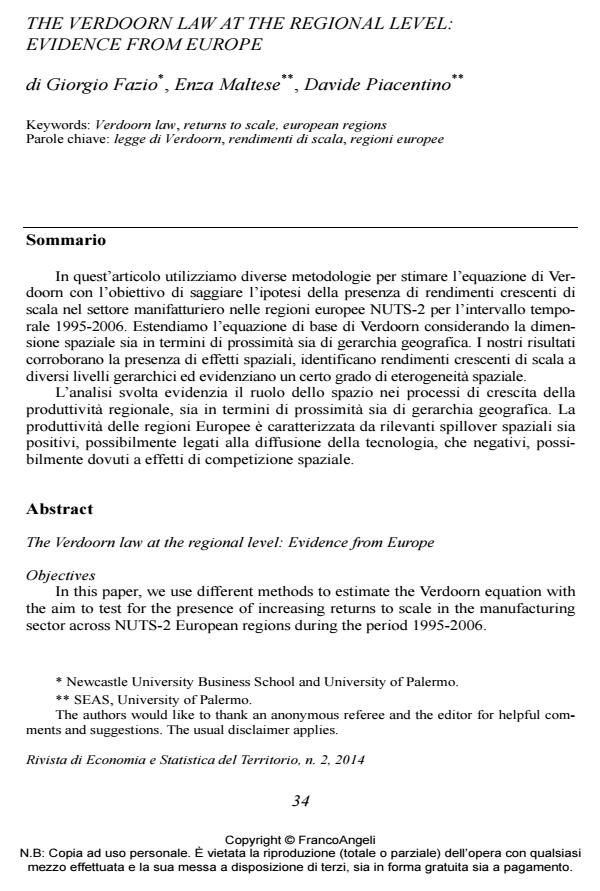The Verdoorn law at the regional level: Evidence from Europe
Journal title RIVISTA DI ECONOMIA E STATISTICA DEL TERRITORIO
Author/s Giorgio Fazio, Enza Maltese, Davide Piacentino
Publishing Year 2014 Issue 2014/2
Language Italian Pages 14 P. 34-47 File size 646 KB
DOI 10.3280/REST2014-002002
DOI is like a bar code for intellectual property: to have more infomation
click here
Below, you can see the article first page
If you want to buy this article in PDF format, you can do it, following the instructions to buy download credits

FrancoAngeli is member of Publishers International Linking Association, Inc (PILA), a not-for-profit association which run the CrossRef service enabling links to and from online scholarly content.
In this paper, we use different methods to estimate the Verdoorn equation with the aim to test for the presence of increasing returns to scale in the manufacturing sector across NUTS-2 European regions during the period 1995-2006. Method and Results We extend the basic Verdoorn equation by considering the spatial dimension both in terms of geographical proximity and hierarchy. Our results corroborate the presence of spatial effects, identify increasing returns to scale at different hierarchical levels and highlight some degree of spatial heterogeneity. Conclusions The analysis underlines the role of space in regional productivity growth processes, both in terms of geographical proximity and hierarchy. The productivity of European regions is characterized by both positive spatial spillovers, possibly due to technological diffusion, and negative spatial spillovers, possibly due to spatial competition effects.
Keywords: Verdoorn law, returns to scale, european regions
Jel codes: C31, O47, R11, R12
Giorgio Fazio, Enza Maltese, Davide Piacentino, The verdoorn law at the regional level: evidence from europe in "RIVISTA DI ECONOMIA E STATISTICA DEL TERRITORIO" 2/2014, pp 34-47, DOI: 10.3280/REST2014-002002